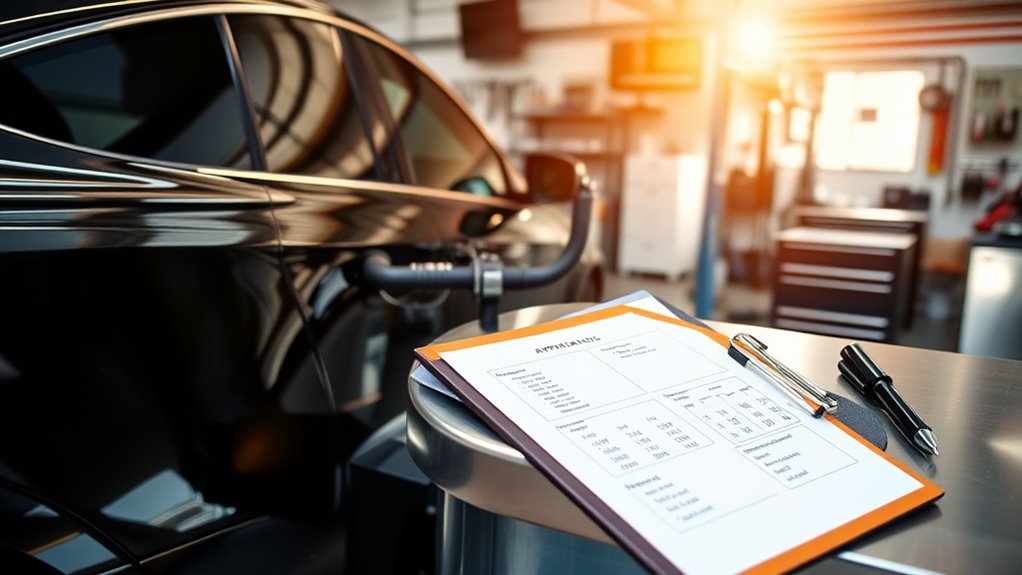You might think non-owner vehicle bonds are straightforward and low-cost, but there's more to it. Understanding the various expenses involved can save you from unexpected financial strain. From the bond premium influenced by your credit score to additional fees like inspections and appraisals, each cost adds up. Knowing what to expect can help you budget effectively. So, what are the specific costs you should keep in mind?
Key Takeaways
- Non-owner vehicle bonds typically do not have a specific minimum bond amount; costs are linked to SR-22 insurance coverage requirements.
- Bond premiums are influenced by credit scores; higher scores can lead to lower costs.
- Additional fees for filing documents usually remain under $100, impacting the total bond acquisition cost.
- Vehicle inspections in Virginia cost about $16, which can affect the overall expenses related to bond acquisition.
- Luxury vehicles will generally incur higher bond premiums due to their value and repair costs compared to lower-value vehicles.
Understanding the Minimum Bond Amount

When you're maneuvering the world of non-owner vehicle bonds, understanding the minimum bond amount is crucial.
These bonds often relate to SR-22 insurance requirements rather than title bonds. In Texas, while Lost Title Bonds are based on the vehicle's value—set at 1.5 times that amount—there's no specific minimum bond for SR-22 purposes, as it's tied to insurance coverage. Additionally, it's important to note that Texas Lost Title Bonds are required for vehicle title applicants lacking adequate proof of ownership. Furthermore, SR-22 insurance serves as proof of financial responsibility and is often mandated by the state following certain driving violations.
Non-owner SR-22 insurance guarantees you meet liability coverage requirements, and filing the SR-22 form typically costs around $25.
Factors Influencing Bond Premium Costs
Understanding the factors that influence bond premium costs is essential for anyone looking to secure a non-owner vehicle bond. Your credit score plays an important role; a higher score can greatly reduce your premiums.
Insurers also take into account your financial stability and industry experience, as these factors indicate reliability. Additionally, the type of bond you choose impacts costs—contract bonds generally have higher premiums due to increased risk.
While location affects insurance rates, bond costs are less sensitive to geographic factors. Finally, your past claims history can increase costs or even lead to denied applications.
Additional Fees Associated With Bond Acquisition
Acquiring a non-owner vehicle bond often involves various additional fees that can impact your overall costs.
Understanding these fees is essential for budgeting effectively. Here are some common fees you might encounter:
- Filing Fees: Costs for submitting necessary documents can vary by state but usually remain under $100.
- Third-Party Fees: Agencies or brokers may charge for their services, including paperwork and administration, which can add to your bond costs.
- Processing Costs: Underwriting expenses related to risk assessment are often included in the premium but can vary based on complexity.
Being aware of these additional fees helps you avoid surprises and guarantees you're prepared for the total costs associated with acquiring your bond.
Inspection and Appraisal Costs

Additional fees can greatly affect your budget for a non-owner vehicle bond, but inspection and appraisal costs are equally important to take into account.
Additional fees, along with inspection and appraisal costs, can significantly impact your budget for a non-owner vehicle bond.
In Virginia, standard vehicle inspections cost $16, while larger vehicles like tractor trucks may run you $51. Motorcycles are more affordable at $12.
Keep in mind that a reinspection fee of $1.00 could apply if needed. For appraisals, these are essential for determining the vehicle's value for title bonds, typically calculated at 1.5 times the appraised value.
While specific appraisal fees aren't mentioned, you'll need licensed agencies to conduct the process. Understanding these costs upfront helps you better plan for your non-owner vehicle bond and avoid unexpected expenses.
Variations in Costs by Vehicle Type
When considering costs for non-owner vehicle bonds, the type of vehicle plays an essential role in determining your expenses. Factors like vehicle value, age, and usage affect insurance rates considerably.
Here are some key points to keep in mind:
- Luxury vehicles incur higher premiums due to their value and repair costs.
- Older or lower-value vehicles typically have lower insurance costs.
- The vehicle's make and model can impact maintenance and repair expenses.
Additionally, whether you're using the vehicle for personal or commercial purposes can also influence your premiums.
Understanding these variations helps you budget better for your non-owner vehicle bond and tailor your insurance needs effectively.
Payment Options for Surety Bonds
Understanding your payment options for surety bonds is vital for effective financial planning. Many surety companies offer flexible payment plans, allowing you to spread the cost over time. These plans often require a down payment followed by scheduled payments, though additional fees or interest may apply.
Your creditworthiness plays a significant role in determining eligibility for these installment options. While larger bonds might necessitate full upfront payment, smaller bonds typically offer more flexibility.
It's important to acknowledge that bonds with cancellation clauses are preferable for financing. By strategically managing these payment options, you can enhance cash flow and maintain financial stability, making sure to take into account any extra fees when planning your budget.
Long-term Financial Implications of Bonding

While entering into long-term financial commitments like vehicle bonds can provide stability, it also requires careful consideration of the associated risks and implications.
You need to be aware of several key factors:
- Interest Rate Fluctuations: Rising rates can decrease bond values and increase costs.
- Depreciation Risks: Vehicles lose value quickly, potentially leading to negative equity, complicating future decisions.
- Financial Flexibility: Long-term commitments can limit your ability to adapt to changing market conditions.
Conclusion
So, you're ready to plunge into the delightful world of non-owner vehicle bonds, huh? Just remember, between bond premiums and those sneaky fees, it's like a treasure hunt—except the treasure is your wallet getting lighter! Don't forget the inspection costs; you wouldn't want your vehicle to be a "hidden gem" in the eyes of the inspector. Keep these costs in mind, and you'll be well on your way to mastering the art of bonding—financially, at least!


